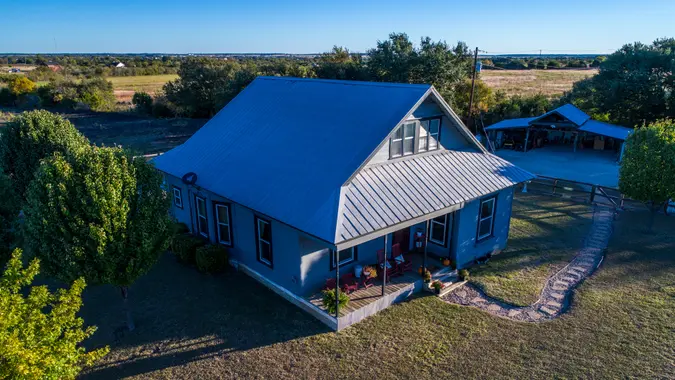‘Discount Points’ Could Lower Your Mortgage Payment: Here’s How

Commitment to Our Readers
GOBankingRates' editorial team is committed to bringing you unbiased reviews and information. We use data-driven methodologies to evaluate financial products and services - our reviews and ratings are not influenced by advertisers. You can read more about our editorial guidelines and our products and services review methodology.

20 Years
Helping You Live Richer

Reviewed
by Experts

Trusted by
Millions of Readers
If you’re buying a home in a high interest rate environment, there’s a handy little hack that can enable you to reduce your rate over time, known as “discount points” or “buying down the rate.”
This approach allows you to put money upfront to pay less in interest over time. Unsurprisingly, with interest rates having crept into higher territory over the past few years, more homebuyers opted to do this in 2022, around 45% of buyers, according to Zillow.
Is this still a good strategy? Mortgage and real estate experts weighed in.
What Savings Do Discount Points Bring?
Buying points at escrow closing lowers the interest you pay over time, according to Anthony Grosso, a senior loan officer with Green River Capital. He explained that, typically, one point costs you 1% of your loan amount and can usually lower your mortgage interest rate by 0.25% or so in a negotiation with your lender. If you can afford it, you can buy more than one point, as well.
“What you are doing is prepaying mortgage interest in order to save money over the life of your loan,” Grosso said.
If you’re buying a $500,000 mortgage at a 7% interest rate, one discount point would be around $5,000. This gets applied to the rate and can add up to significant savings over time.
It does vary per borrower, Grosso said, and it’s not likely to drop your interest rate a full point, say from 7% to 6%, but more likely to something like 6.625% after the discount point.
“With that lower rate you would have a lower mortgage payment every month. You pay the $5,000 upfront but get the benefits of the lower rate for the life of the 30-year loan,” Grosso explained.
While this might not sound like much savings at first, over the life of the loan, you’d save around $45,000 in interest paid. “That is a great return,” he said.
He did point out that most of the time if you’re shopping for a rate online, they may already have included one discount point in the overall costs, so don’t be surprised to learn that’s as low as you can go.
It Requires Longevity To Really Save
While this all sounds great, Grosso explained that buying points is generally only a good idea if you plan to keep the loan for a good while.
“If you plan to just stay in the home for a few years, points won’t help you save much if anything,” he said.
Johnny Austin, owner of Sell My House Now, pointed out that most people don’t stay in their homes long enough to truly benefit.
“The break-even period on points can be five to seven years, and if you plan to move sooner, the upfront cost may outweigh the savings.”
Another lesser-known downside is the opportunity cost, Austin said.
“Instead, the money spent on points could be used for higher-return investments or emergency savings. I advise running a detailed analysis of how long you plan to stay and where else that cash could be working harder for you.”
It Depends on the Market and Timing
Whether it makes sense to buy points also depends on other factors besides how long you’ll stay in the home — such as whether the interest rates are going up or down. If you’re excited to go out and negotiate discount points now on a loan, Grosso urged caution.
“Right now we are in a high-interest rate environment and trending down. That means the rates within the next two years will more than likely be lower than where we are currently,” he said.
“If you refinance to a 6% [loan] within two years, for example, the upfront discount point you paid would basically have been money thrown away because you didn’t have enough time in the loan to make it worthwhile,” Grosso said.
Right now the smartest move is to keep your closing costs as low as possible, not pay points and wait for a better opportunity to refinance when there is a higher percentage chance of you staying in the loan for the long term, Grosso suggested.
More From GOBankingRates
 Written by
Written by  Edited by
Edited by 

























